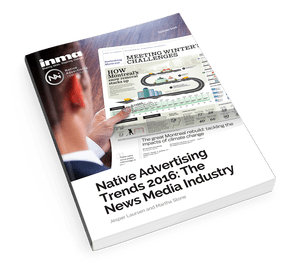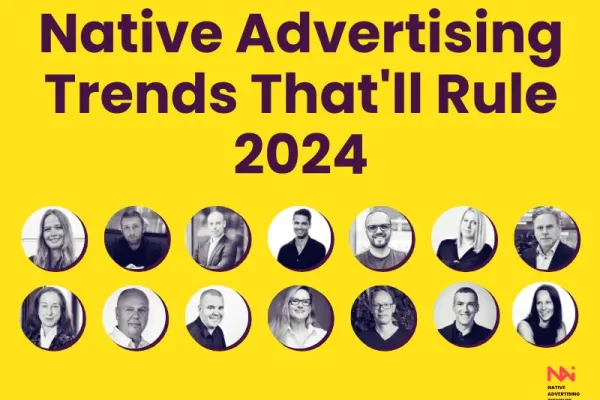
By Shailesh Shukla
VP of Products and Strategy at Instart Logic
California, US
Connect
In a previous blog post, I discussed the uncertainty surrounding business model economics for advertisers and publishers. I explored whether ad blockers are truly helping consumers or rather trying to redirect ad revenue into their own pockets.
In this blog post, I discuss security issues around digital advertising — more specifically, ad fraud and malicious online advertising, better known as “malvertising,” which continues to plague the online ad industry.
For every $3 spent on digital ads, $1 is lost to ad fraud.
Interactive Advertising Bureau (IAB) estimated that for every $3 spent on digital ads, $1 is lost to ad fraud. The report found that in 2015, ad fraud cost the industry $18.5B. The World Federation of Advertisers estimates that the total cost of ad fraud could exceed $50B by 2025.
The Growth of Ad Fraud
Ad fraud is a growing concern among advertisers. Click fraud is a rampant form of ad fraud, where a bot or human is employed to click ads repeatedly to either generate revenue for publishers or drain revenue from a competing advertiser. The majority of click fraud is carried out by bots. According to the Association of National Advertisers, bots can represent up to 37% of an advertiser’s impressions. The study also estimates that ad fraud created by bots will cost advertisers $7.2B in 2016.
Programmatic buying has also led to an increase in malvertising.
The rise in programmatic buying has contributed to non-human ad fraud. Programmatic buying uses algorithms to purchase and sell advertising space in real time. It automates the process and does not require human interaction. The study found that programmatic display ads are 14% more likely to be impacted by bots.
RELATED: 5 Pitfalls with Programmatic Native
Programmatic buying has also led to an increase in malvertising. Malvertising infects a user’s computer with malware that downloads automatically when a user visits a website. It also causes redirection to sites that a user did not intend to visit and installs spyware on their system. Cybercriminals know how to game the ad serving ecosystem.
They will serve clean ads to build a good reputation with ad networks, which gets them access to be able to place ads on high-profile sites like Forbes and the New York Times. Once given access, they will insert malicious code into ads that will go undetected.
Skewed Online Measurement
Bots not only significantly impact revenue loss for advertisers, but they also skew the online metrics advertisers use to make decisions on profitability. Bots drive up traffic to websites, which depresses conversion rates since conversions are measured by the desired action over web traffic. In contrast, click-through rates look much better than they should.
Bots even pretend to be humans, collecting cookies from mainstream sites, creating an attractive cookie profile that advertisers will pay a premium to target their ads to.
Responsibility needs to be addressed not only by advertisers but also publishers.
With measurement data skewed by bots, advertisers are at risk of making decisions that would shift budget from a seemingly poorly-performing campaign to one that seems to be doing well — thereby, in some cases sending dollars to the bad guys. Essentially, advertisers find themselves unwittingly optimizing for bot behavior rather than actual human behavior.
RELATED: “There Would Be No Ad Blockers If There Were No Shitty Ads”
Publishers also need to be diligent about ad fraud. Advertisers will not be happy to be paying publishers for fraudulent traffic. The reputation of a publisher can be negatively affected if known to be lax on ad fraud. Providing transparency to advertisers shows good faith and garners trust that the publisher has nothing to hide. Publishers should work with a third party to verify legitimate traffic and identify bad bot traffic. Responsibility needs to be addressed not only by advertisers but also publishers.
How to Combat Ad Fraud
Advertisers have to become savvier to mitigate the detrimental effects of ad fraud. Here are a few suggestions to consider:
- Be cautious about making ROI decisions based on clicks and impressions that can be easily faked by bots to inflate the numbers. Focus on real metrics that move the needle, such as sign-ups, sales, and other conversions that are meaningful to the bottom line.
- Monitor measurement data and pay attention to anything unusual, such as spikes in number of clicks and clickthrough rates, and what seems to be driving them. Based on this analysis, blacklist low-quality sites that are driving traffic without corresponding conversions.
- Don’t discount organic traffic and continue to post blogs, write press releases and engage with social media to drive quality traffic and interest to your site.
- Most importantly, to combat ad fraud, detect bots to filter out bad traffic while letting good traffic through. Bot detection will help to reduce revenue loss and skewed metrics that ad fraud causes.
RELATED: How Publishers Can Respond to Ad Blockers
To mitigate the impact of bots, there needs to be a means of detecting them. Traditional bot detection software typically requires manual rules and is slow to be updated to handle new threats.
My company, Instart Logic, has developed a Bot Defense that goes further by using behavioral fingerprinting and proactive monitoring of application behavior at the browser level made possible by our client side architecture. This allows far greater accuracy in differentiating actual human behavior and beneficial bot activity from malicious bot activity.
One thing is certain, ad blockers will continue to impact the ad industry for the foreseeable future.
Where Do Publishers Go From Here?
Through my series of blog posts, I have shed light on the impact ad blockers have on the ad ecosystem, specifically user experience, business model economics and security. Time will tell how the ad industry will shake out.
One thing is certain, ad blockers will continue to impact the ad industry for the foreseeable future. It’s now up to publishers to decide how they’ll lead the industry through the shifting digital landscape.
This article was originally posted on Instart Logic — a provider of a ‘block the ad blocker’ solution that restores digital ad revenue to premium web publishers. In the coming weeks Shailesh Shukla will continue his writing on the subject of ad blockers.
DOWNLOAD: Threats and opportunities according to news media publishers; Native Advertising Trends – the NEWS Media Industry






